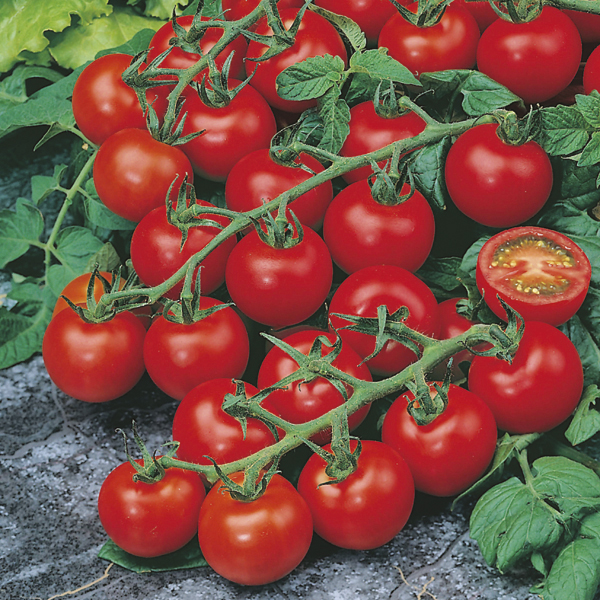Watering
Wet the seed starting mix. Push your finger into the soil to your first knuckle and make sure it is damp. Excess water should drain through.
Dismiss

SKU 203
Wet the seed starting mix. Push your finger into the soil to your first knuckle and make sure it is damp. Excess water should drain through.
Indirect sunlight, 6 to 8 hours
Maintain temperatures between 18°C - 24°C. Avoid draughts as these can create undesirable temperature fluctuations. Consider giving your plant an occasional misting twice every week to maintain the optimum humidity level.
Provide fertilizer once the first true leaves emerge. The first set of leaves that appear are known as the seed leaves. The second set of leaves are the first ‘true leaves,’ and a sign that your plant is getting mature and ready for serious growth. Dilute a balanced fertilizer to ¼ the strength recommended. Fertilize once in 2 weeks.
Growing tomatoes from seed isn't hard, but there are a few things to be aware of. Tomato seeds are almost always started indoors – whether in a greenhouse or a sunny window ledge – and then transplanted to beds once they have at least a few leaves and an established root system. Starting seeds indoors is optional with many vegetables, but tomato seeds need a constant soil temperature of at least 60 degrees, and preferably 80 degrees, to germinate. In temperate climates, it may be midsummer before the soil gets that warm, and by then it’s too late for tomatoes to grow and mature before the end of the growing season.
Tomato seeds are typically started “six to eight weeks before the average date of last frost,” as the seed packets so ubiquitously state. Tomatoes originate deep in the tropics; temperatures below 32 degrees Fahrenheit are their death knell. And because they take three months or so to produce ripe fruit, most gardeners want to get the process started early.
The three most important steps are:
- Fill the pots with potting mix to within a 1/2-inch of the top and place a pair of seeds on top of the soil in each one near the center of the pot (having two is good insurance in case one doesn’t sprout. Pinch off the smaller, weaker of the two if they both sprout).
- Cover them with a ¼-inch layer of soil mix and the compress the soil with your fingers. Good seed-to-soil contact is important for germination.
- Sprinkle water on the seeds whenever the top of the soil mix appears dry. Don’t keep the soil soggy, however – the seeds may rot.
The seeds will need a sunny window with at least 4 hours of direct sun each day, but preferably more. Also: the warmer it is, the faster tomato seeds will germinate. Maintaining room temperature above 60ºF will get the job done, but there are also seedling heat mats, heat lamps and many other tricks that farmers and gardeners have concocted to speed up the process. A simple approach is to cover the pots tightly with plastic and take advantage of the greenhouse effect to warm up the soil when the sun is out and hold on to the heat at night.
There is an important caveat about tomato seedlings and mini-greenhouses: If you’re covering your seeds to keep them warm, you must remove the cover as soon as they start to germinate. Otherwise, they may succumb to damping off disease, a fungal infection that proliferates in still, moist air. This appears as brown and grey spots on the leaves followed soon after by the death of the seedling). Damping off is a big challenge with tomato seedlings in general, so try to provide good air circulation during their infancy period indoors. A tiny fan or heat vent nearby is helpful, as is an open window from time to time (but only when outdoor temps get up to room temp).
"Sign up for our emails and get exclusive discounts on all your favorite plants and gardening products!"
You’ve subscribed to: Plantshop.ae Newsletter.
You can always manage your subscriptions through the “Unsubscribe” link at the foot of each Plantshop.ae newsletter.


You’ve subscribed to:
Plantshop.me Newsletter.
You can always manage your subscriptions through the “Unsubscribe” link at the footer of each Plantshop.me newsletter.